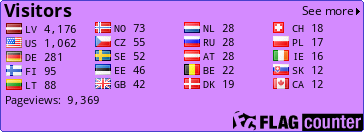[LAT] Baltā kāpa ir valsts nozīmes īpaši aizsargājamais ģeologiski-ģeomorfoloģiskais dabas piemineklis, kurš atrodas Jūrmalā, pie Vārnukroga. Pēc Jūrmalas tūrisma informācijas punkta datiem (tel.nr.+371 67147900), Baltā kāpa ir brīvi pieejama apskatei (nav jāmaksā par tās apskati), kā arī tā neatrodas privātīpašumā, vai apsargājamā teritorijā.
Kāpas ir vēja sanesti smilšu pauguri. Kāpas sāk veidoties brīdī, kad vēja pārvietoto smilšu ceļā ir parādījies kāds šķērslis – reljefa izcilnis, celms, augu cers vai krūms. Tā priekšā un aiz tā pakāpeniski uzkrājas smilšu kaudzīte. Pamazām tās augstums var palielināties līdz vairākiem metriem. Smiltīm uzkrājoties, no tām pakāpeniski veidojas kāpas. Augu augšanas apstākļi jūras piekrastē mainās atkarībā no attāluma līdz jūrai, tāpēc kāpu veģetācijā var nodalīt vairākas atšķirīgas augu sabiedrību joslas un dažādus kāpu biotopus. Attālinoties no jūras, tiek šķērsotas dažādu tipu kāpas jeb dažādas kāpu attīstības stadijas. Sākumā ir zemas embrionālas kāpas gandrīz bez augiem, tālāk nedaudz lielākas priekškāpas, pēc tam seko pelēkas kāpas, kur augsne vairs nav balta ka smilts, bet pelēka. Pēc pelēkajām kāpām tipiskā gadījumā seko kāpas, kas apaugušas ar mežu.
Baltā kāpa ir Bolderājas-Priedaines kāpu grēdas galējais R gals, kas beidzas ar augstu, brūkošu krauju, kuru patstāvīgi apskalo Lielupe. Baltā kapa ir asimetriska vaļņveidīga kāpa ar garu stāvu nogāzi. Kāpa veidojusies pēdējos divsimt gados, un ir novietojusies perpendikulāri jūras krastam.
Kāpa radusies pēc tam, kad Lielupe 1757. gada pārrāva zemes šaurumu, izveidojot jaunu ieteku jūrā. No kāpas paveras lielisks skats uz Lielupi, Stirnu ragu, Buļļupi un tālumā var redzēt arī jūru.
Uzdevums:
1. Kāds ir Baltās kāpas garums, platums un augstums?
2. Kā sauc zinātni, kas pēta Zemes virsmas formas un procesus, kas tās radījušas?
3. Kā sauc tādas kāpas (kāda krāsā) kā Baltā kāpa, t.i., tādas, kas ir apaugušas ar mežu?
4. Ar cik soļiem var nokāpt pa smiltīm pa Baltās kāpas slīpumu (no +- augstākas daļas) līdz pludmalei, un ar cik soļiem pa to pašu vietu var uzkāpt līdz augšai (priedēm)? :) :)
Savas atbildes (norādiet arī savu geovārdu!) sūtiet uz manu e-pastu - masierite12@gmail.com. Tad, kad būsiet saņēmuši apstiprinājumu par atbilžu pareizību, varēsiet pielogot slēpni.
Ja ir iespējams, lūdzu, uzņemiet bildi, kurā varēs redzēt Jūs uz šīs kāpas un pievienojiet šo foto savam logam!
[ENG] White Dune is a special geological-geomorphological nature monument protected by state, which is located in Jurmala, near Varnukrogs. According to Jurmala Tourism Information Centre information (tel.nr. +371 67147900), White Dune is freely accessible for viewing (you should not pay for seeing it), and it is not on private property, or protected area.
Dunes are sand hills flown together by winds. Dunes begin to form when there is an obstacle in the way of wind moved sand - some terrain lug, a shrub of plant or bush or stump. A sand pile gradually accumulates in front of it and behind it. Gradually, the height may be increased up to several meters. When the sand accumulates, the dunes gradually are formed. Plant growth conditions offshore vary depending on the distance to the sea, therefore, in dune vegetation we can distinguish between several different plant zones bands and various dune biotopes. Further from the sea, different types of dunes can be crossed or various stages of dune development. Initially, there are low embryonic dunes, almost without plants, then slightly larger foredunes, followed by the grey dunes, where the soil is no longer white as sand, but grey. After the grey dunes in a typical case, will followed dunes, covered with forests.
White Dune is final R tip of Bolderaja-Priedaine dune ridges , ending in a high, steep falling slope which is constantly washed by the waters of the river Lielupe. White dune is an asymmetrical rampart-like dune with long steep slope. Dune has been formed during the last two hundred years, and is positioned perpendicularly to the sea coast. The dune was created after the river Lielupe in 1757 broke the land reck, and created a new estuary into the sea. From the dune there is a magnificent view of the river Lielupe, Stirnu Horn, the river Bullupe and in the distance you can also see the sea.
Task:
1. What is the length, width and height of the white dune?
2. What is the name of science that studies the Earth's surface, its forms and processes which have created them?
3. What is the name of the dunes (which colour) as the White Dune, and which are covered with forests?
4. How many your steps can get down from White Dune gradient highest part (walking along the sand) to the beach, and how many steps are necessary to climb to the top (till pine trees) along the same place ?
Send your answers to my e-mail. Then, once you have received confirmation of the accuracy of answers, you can log in the cache. If possible, please take a picture, on which you can be seen on this dune, and add this photo to your log!

Apsveicu ar:
| FTF |
Edgars Laicans & bindons |
| STF |
ibnss & Becuks |
| TTF |
Andris |